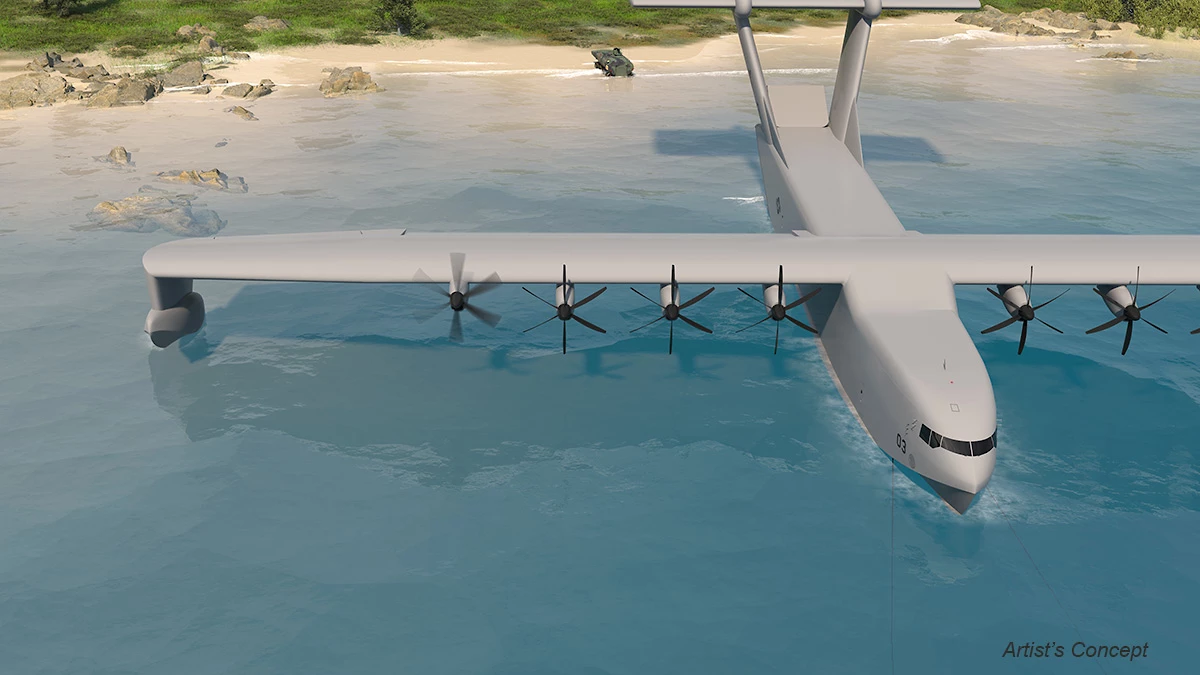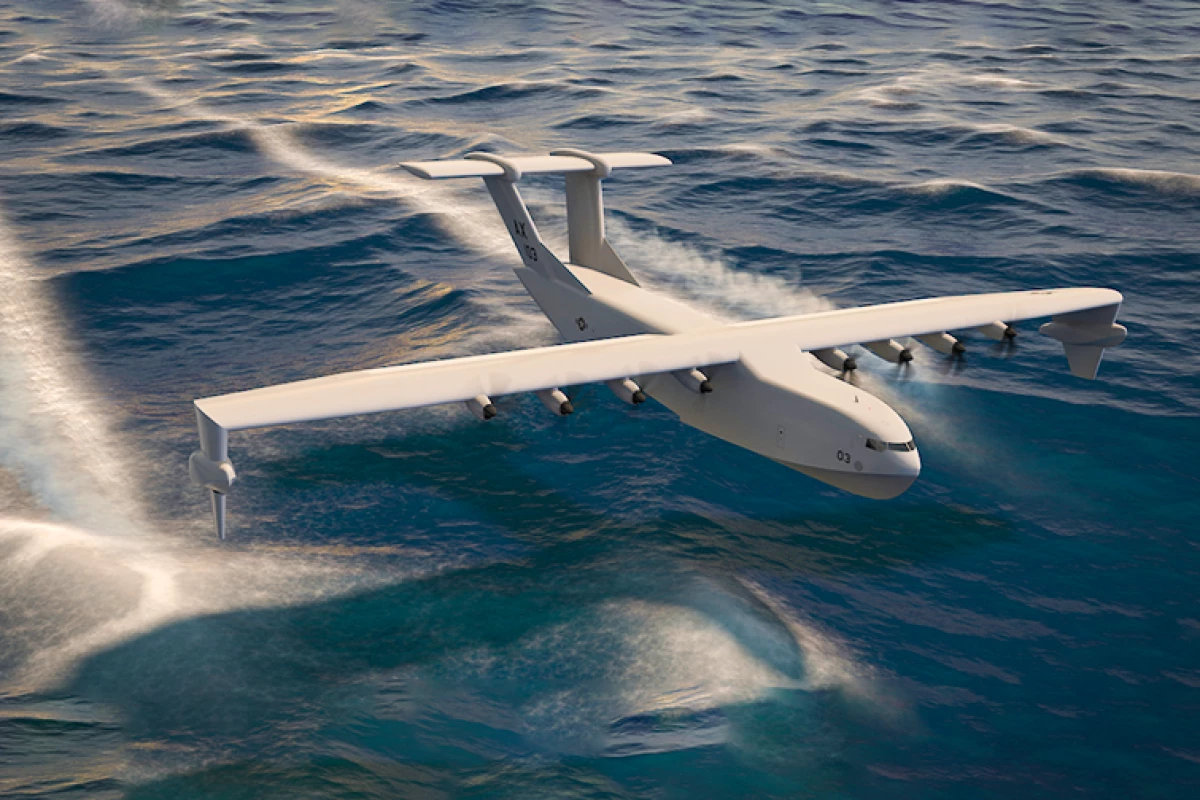Aurora Flight Sciences has updated the design of its Liberty Lifter seaborne military heavy-lift transport – a highly efficient X-plane the company is developing for DARPA that achieves bulk lift by using wing-in-ground effect.
Since 2022, DARPA has been developing the Liberty Lifter, which is a project to develop a relatively inexpensive seaplane that has the cargo volume of a C-17 Globemaster III transport aircraft, yet can carry 100 tons of cargo. In addition, it is supposed to have a ferry range of 6,500 nm (7,500 miles, 12,000 km).
Aurora's candidate is in preliminary design Phase 1B of its development cycle, which places special emphasis on risk reduction in the steps for designing, building, launching, and flying the completed X-plane using low-cost manufacturing methods.
This involves Aurora teams building full-scale components, including part of the fuselage, using novel materials and then testing them before assembly. In addition, the company has built test models for water tests in a tow tank at Virginia Tech and is working on sensors for detecting and predicting surface waves.

One particular challenge is dealing with rough seas because the Liberty Lifter flies using the wing-in-ground effect where the aircraft flies low and gains additional lift by exploiting the air trapped between the wings and the surface of the sea. This is great in calm conditions, but when things get rough, the aircraft needs to be able to compensate to fly safely.
The latest changes to the prop-driven Liberty Lifter include swapping out the t-tail for a pi-tail. Essentially, this means that the stabilizers are held up by a fork-shaped rudder instead of a solid one. According to the company, this allows an aft cargo door while making the airframe more structurally efficient. Another innovation is to move the floats from the side-sponsons on the hull to the tips of the wings for better performance while keeping down costs.
Phase 1B is scheduled for completion in the near future, and the first flight for the Liberty Lifter is expected to take place in 2028.
Source: Aurora Flight Sciences





